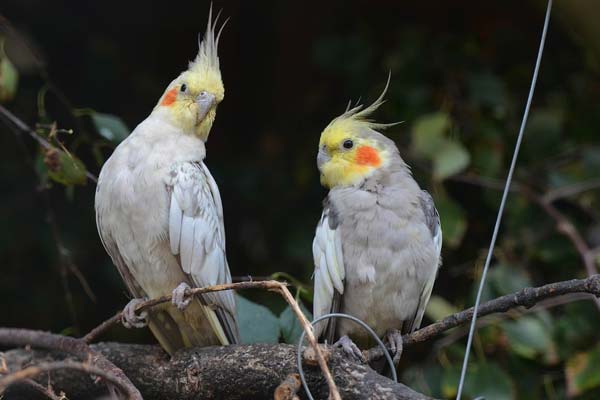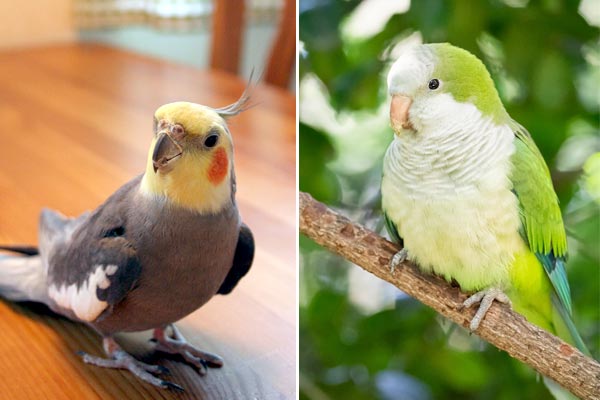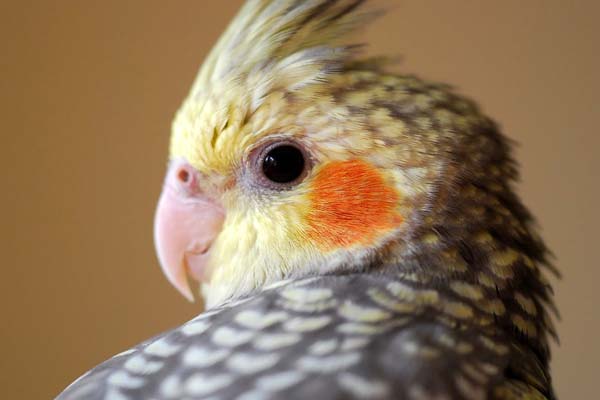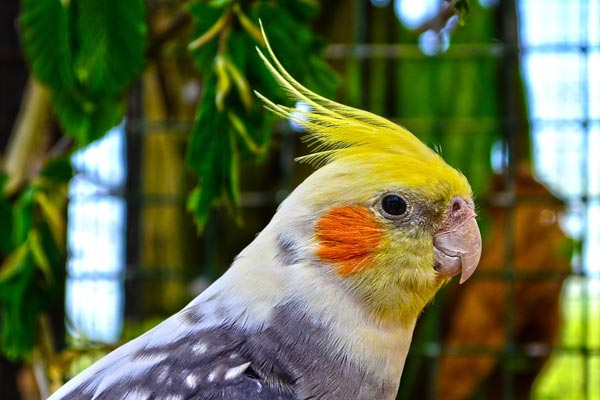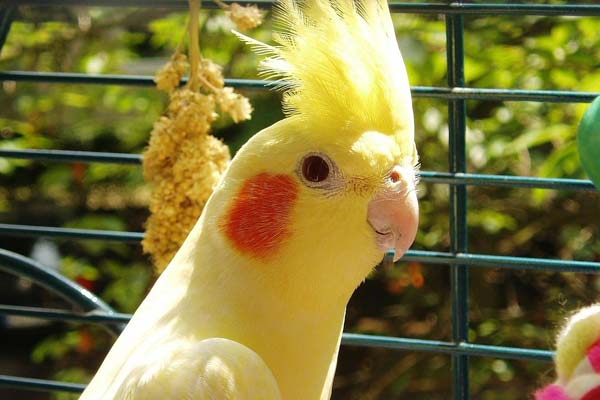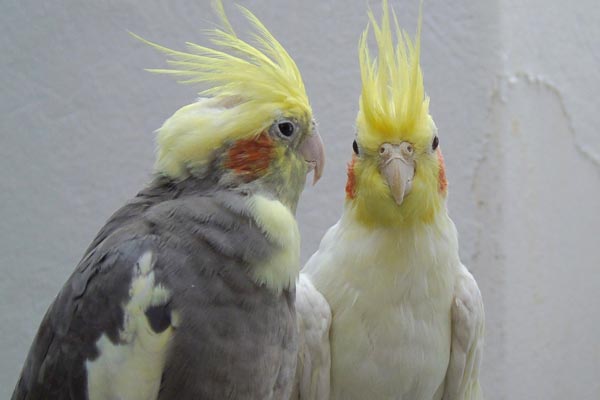Are Cockatiels Loud? How to Train Your Bird to Be Quieter in Noisy Situations
Cockatiels are a famous pet bird species known for their friendly and affectionate nature. However, many wonder if these birds are loud and noisy, especially if they plan to keep them in an apartment or a small home.
The simple answer is that cockatiels can be noisy, but their vocalizations are usually less loud or piercing than other parrot species.
Cockatiels are social birds that use vocalizations to communicate with other birds and their human companions.
They can make various sounds, including whistles, chirps, squawks, and songs. While their vocalizations are not as loud as those of larger parrots, they can still be heard in a quiet room or a small living space.
However, cockatiels are moderately quiet and disruptive; their vocalizations can add a cheerful and lively atmosphere to a home.
Cockatiel Vocal Habits
Cockatiels are known for their vocalizations, and their songs and chatter can be a delightful addition to any household. However, it’s essential to understand these birds’ typical noise levels and patterns and any gender differences in vocalization.
Typical Noise Levels and Patterns
Cockatiels are diurnal, meaning they are most active during the day. During this time, they will typically vocalize more frequently and loudly. Their daytime vocalizations can include singing, whistling, and chatter.
These sounds are often accompanied by physical actions, such as head-bobbing or flapping their wings. At night, cockatiels will typically be quieter. They may make occasional soft noises, but they will usually be sleeping during this time.
Gender Differences in Vocalization
Male and female cockatiels have different vocalization patterns. Males are generally more vocal than females and sing and whistle more frequently. Conversely, females tend to be quieter and may only vocalize when trying to communicate with their mate or other birds.
It’s also important to note that individual cockatiels can have unique vocalization patterns. Some birds may be more talkative, while others prefer to whistle or make other noises.
Reasons for Cockatiel Vocalizations
Cockatiels are renowned for their vocal abilities, and though they may not be the loudest of birds, they can still produce a considerable amount of noise.
Their vocalizations serve various purposes, and gaining insight into these reasons can assist you in providing optimal care for your pet bird.
Triggers Behind Vocal Behavior
Cockatiels use vocalizations to communicate with their owners and other birds. Here are some common triggers behind cockatiel vocal behavior:
Fear, Stress, and Loneliness: Cockatiels can become vocal when scared, stressed, or lonely. If your bird makes loud noises, it may indicate that they need more attention or companionship.
Boredom and Overstimulation: Cockatiels can become noisy when bored or overstimulated. Providing your bird with toys and activities can help keep them entertained and reduce vocalizations.
Hormonal Changes: Male and female cockatiels can become more vocal when trying to attract a mate during mating season. Hormonal changes can also cause increased vocalizations in both male and female birds.
Flock Calls and Contact Calls
Cockatiels are social birds and use vocalizations to communicate with their flock. Contact calls are used to keep track of other birds in the flock, while flock calls are used to communicate with the entire group. Cockatiels may also make noise in the morning or at night to communicate with their owners.
Environmental Factors
Environmental factors can significantly influence cockatiel vocalizations. Loud noises, darkness, and the perception of potential predators can trigger fear in your bird, leading to increased vocalizations. Positive reinforcement techniques can teach your pet bird to remain calm and quiet in such situations.
Understanding Your Cockatiel’s Personality
Every cockatiel is unique, and understanding your bird’s personality can help you better understand their vocalizations. Some birds may be more vocal than others, while some may be more prone to hissing or squawking. Consult a vet or bird behaviorist if you are concerned about your bird’s vocalizations.
Managing Excessive Vocalization
Excessive vocalization in cockatiels is a common concern for owners. Identifying the root cause, including hunger, boredom, fear, or attention-seeking, is crucial in effectively managing this behavior.
Effective methods to reduce vocal behavior include:
- Engaging with toys and activities.
- Modeling desirable behavior.
- Positive interactions and contact.
- Ignoring undesirable sounds.
Engaging with toys and activities is an excellent way to keep your cockatiel entertained and mentally stimulated. Providing a variety of toys and exercises can help reduce boredom and excessive vocalization.
Additionally, it is crucial to ensure that the toys and activities are safe and appropriate for your cockatiel.
Modeling desirable behavior is another effective method to reduce vocalization. Cockatiels are social birds and learn by observing their owners. Therefore, modeling desirable behavior can help teach your cockatiel appropriate communication and reduce excessive vocalization.
Positive interactions and contact can also help reduce excessive vocalization. Cockatiels are social birds and thrive on interaction and attention.
Positive reinforcement, such as offering treats and praise, can help teach your cockatiel appropriate communication and reduce excessive vocalization.
Ignoring undesirable sounds is another effective method to reduce excessive vocalization. Cockatiels often make noise for attention, and ignoring undesirable sounds can help teach your cockatiel that excessive vocalization is not an effective way to get attention.
It is also crucial to consider the volume and noise levels of your cockatiel’s vocalizations. Cockatiels are quieter than other parrot species, but their communication can still be disruptive, especially in small living spaces.
Therefore, it is essential to consider the noise levels and decibels of your cockatiel’s vocalizations and work to manage excessive vocalization appropriately.
Cockatiels in Living Spaces
When considering a cockatiel as a companion, one critical factor is its noise level. Cockatiels are not the loudest birds, but they do make noise. Therefore, knowing how to keep them quiet in living spaces is essential.
Noise Levels for Apartments and Houses
Cockatiels can produce sounds that measure around 80 decibels, roughly as loud as a noisy downtown street. Therefore, it is vital to consider the noise level in an apartment or a house before getting a cockatiel. If the apartment or house is noisy, there may be better places for a cockatiel.
Comparing Noise with Other Parrot Species
Cockatiels are relatively quiet compared to other parrot species like macaws and cockatoos. However, they can still produce loud sounds, especially when they want attention or are excited. It is important to note that cockatiels are social birds and need attention from their owners. If they get enough attention, they may stay quiet.
Environment
The environment in which a cockatiel lives can also affect its noise level. If the environment is dark, they may become more vocal because they are afraid. On the other hand, if the environment is too bright, they may become overstimulated and produce more noise.
Apartment
For a cockatiel kept in an apartment, the noise level of the surroundings is crucial to consider. Keeping the bird quiet can be challenging if the apartment is noisy. However, implementing noise reduction measures like noise reduction walls or background noise can help mitigate the issue.
Social
Cockatiels are social birds and need companions. If they have companions, they may stay quiet. Therefore, it is vital to consider getting another cockatiel as a companion for your current cockatiel.
Quieter Parrot Alternatives
Several parrot species are on the quieter side for those looking for a quieter pet bird. While all parrots make some noise, these species tend to be less vocal than others.
One such species is the budgie, also known as the parakeet. These birds are often housed in groups and are very chatty and communicative, but their chirping is generally pleasant to the ears. Given their small size, budgies are not physiologically capable of making exceedingly screams.
Another option is the lovebird, a small parrot species known to be affectionate and playful. They make noise, but their vocalizations are less loud than other parrot species.
Lovebirds are also known to be less destructive than some other parrots, making them a good choice for those concerned about potential damage to their home.
The Pionus parrot is a good option for those seeking a larger parrot species. They are known for being calm and gentle birds, and while they do make noise, their vocalizations are not as loud as some other parrot species.
Pionus parrots are also less likely to develop behavior problems than other parrot species, making them easier to care for.
It’s important to note that while these parrot species are generally quieter than others, they still require a lot of attention and care. They need plenty of socialization, toys, and mental stimulation to stay healthy and happy.
Providing a varied diet of fruits, vegetables, and high-quality pellets is also crucial for their overall health and to prevent injury.

